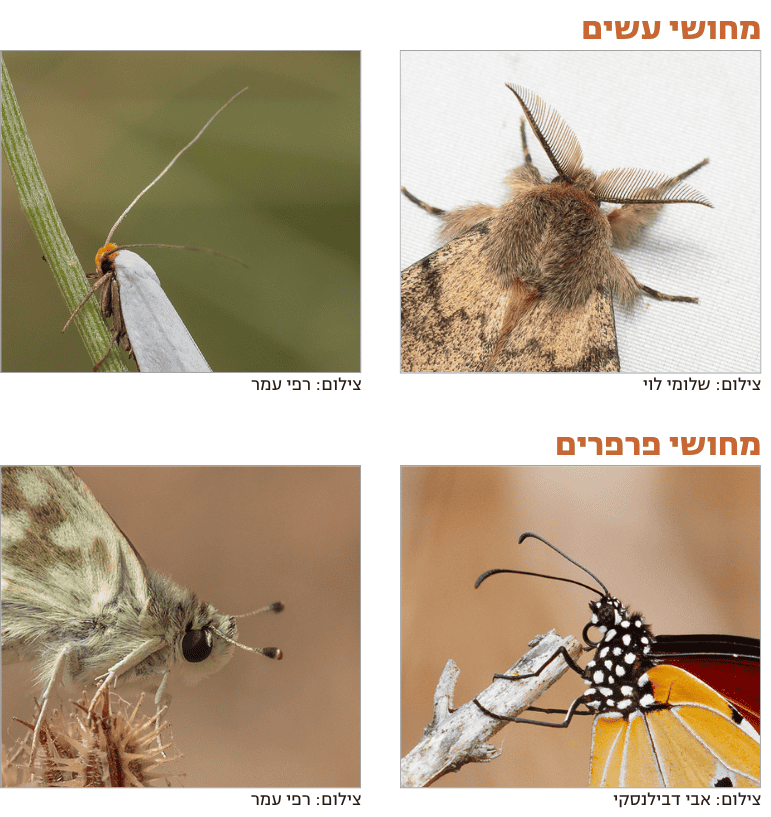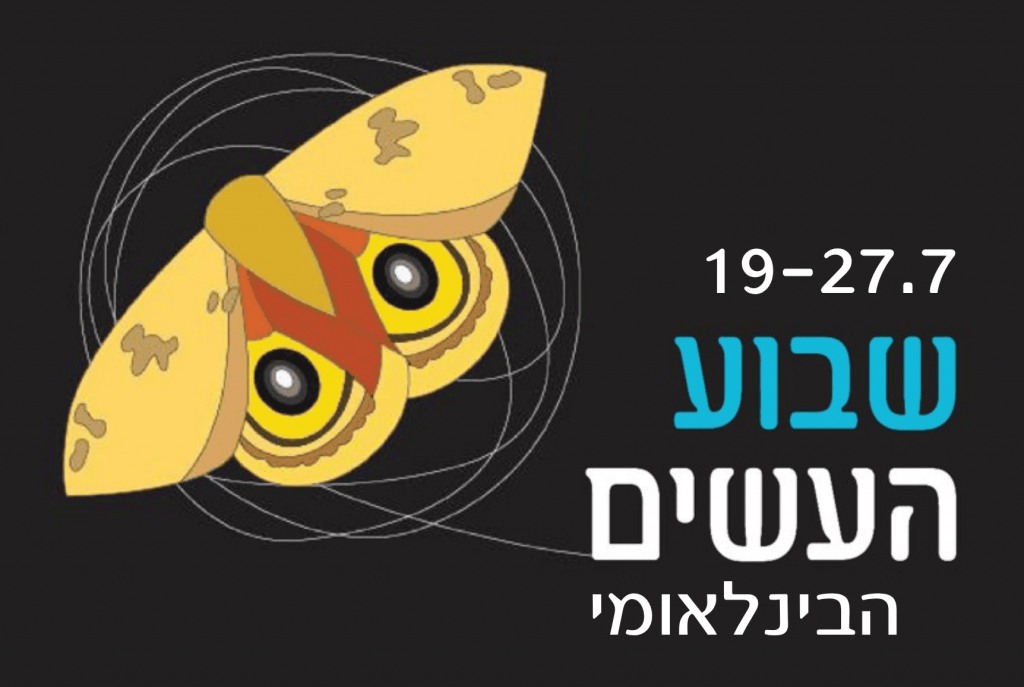During the last week of July, lights are lit, sheets are spread, and (light) traps are set up—welcoming moth enthusiasts across the world and in Israel to celebrate the wonders of the night. Despite their reputation, moths are not “night butterflies.” They belong to the Lepidoptera order but are not considered butterflies, and the difference isn’t always clear-cut. Butterflies are typically active by day, while moths are active at night—though not always, as some moths are also diurnal. One of the main distinguishing features is the antennae: butterflies have club-shaped antennae, while moths show a range of forms—thread-like, feathery, comb-like, and more.

Over 160,000 species of moths are known globally, and about 2,000 have been identified in Israel—though experts believe the real number is much higher. Since many local species remain undescribed by science, citizen science events like Moth Week contribute valuable knowledge and attract new nature lovers to this fascinating nocturnal world.
International Moth Week began in 2012 as a local initiative in New Jersey and has since grown into a global event celebrated in over 90 countries. Its goal is to expand scientific knowledge about moths and inspire people around the world to observe and document them. Each year includes hundreds of events—lectures, light trap nights, local bioblitzes, and more.
In Israel, International Moth Week was first celebrated in 2020, led by Oz Rittner, curator of mollusks and Lepidoptera at the Steinhardt Museum of Natural History, Tel Aviv University. Since 2023, the initiative has been jointly organized by the Israel Center for Citizen Science. Each year, a dedicated project is launched on iNaturalist, where all observations are collected. Events are free and open to the public (recommended for ages 16+).

Why twice a year? Since 2024, Israel has also celebrated Israeli Moth Week in late October. July marks the peak of summer in Israel, when both humans and moths struggle with the heat—even at night. October, however, brings cooler temperatures and shorter days, which trigger many moth species to emerge, mate, and lay eggs before the first rains. These eggs often hatch alongside the first budding plants, giving the next generation a better chance to thrive. For this reason, fall is actually the peak season for moth activity in Israel, offering a chance to see a rich variety of species—especially some large and iconic groups like tiger moths (Arctiinae), lappet moths (Lasiocampidae), and many others. Light traps also attract a stunning diversity of other nocturnal insects.
Upcoming Events – International Moth Week (July 19–27, 2025)
Introductory Zoom Event – Thursday, July 17 at 20:00
Learn about moths, why we monitor them, how to report observations on iNaturalist, and how to set up a light trap.
Register here
Light Trap & Moth Monitoring – Sunday, July 20 at 18:30
Megilat HaEsh Memorial, Jerusalem Hills
Register here
Light Trap & Moth Monitoring – Thursday, July 24 at 18:30
Rakit Campground, Mount Carmel
Register here
Israeli Moth Week will take place on October 24–31, 2025 Event details will be published closer to the date.
Anyone can observe and report moths from anywhere. A great way to do so is by setting up a light trap—a lit area that attracts insects without the need to roam around with a flashlight. These setups draw not just moths but also beetles and many other insect groups. Despite the name, a “light trap” is not an actual trap. Most insects are drawn to the light and remain nearby, allowing for easy documentation and photography.
How to Set Up a Light Trap
- Lighting: Mercury vapor or UV bulbs are ideal, but fluorescent lights work too. Hang a white sheet nearby—the lit surface will attract more insects from a greater distance. Even a regular porch light can work, but sheets help catch insects from all sides.
- Location: Choose a dark spot with little competing light. Ideally, it should overlook a wide area to attract more insects. Natural areas with multiple habitats (e.g., an open area next to woodland) are best, but even city parks or backyards can work.
- Weather: Ideal nights are warm, humid, and calm—no strong winds or low temperatures. Look for nights following an especially warm day. After the first rains of fall and the early hot days of summer, insect numbers often surge.
- Timing: Light traps work best from dusk to early night, or through the night into early morning. The longer the trap stays lit, the more species will show up.
- Power: You’ll need electricity—use a generator, battery, or car hookup. Stretch a rope between trees for hanging sheets, and lay an extra sheet on the ground to catch ground landings. Don’t forget extension cords and a backup bulb!
More information can be found here (Israel Nature Site)

Join the Facebook and WhatsApp groups for Moths of Israel, and follow updates ahead of Moth Week. Observations can be submitted year-round via iNaturalist. Check out the dedicated Moths of Israel project, and view past Moth Week observations from 2020, 2023, and 2024.
Cover photo: Yaakov Slawik, iNaturalist